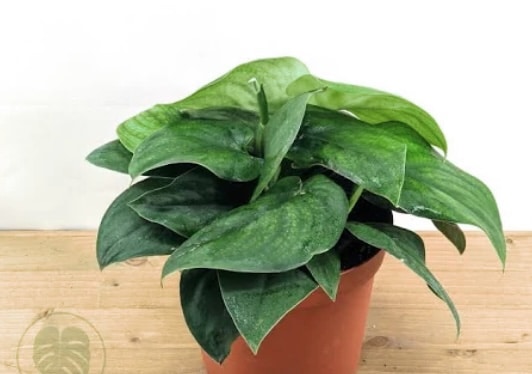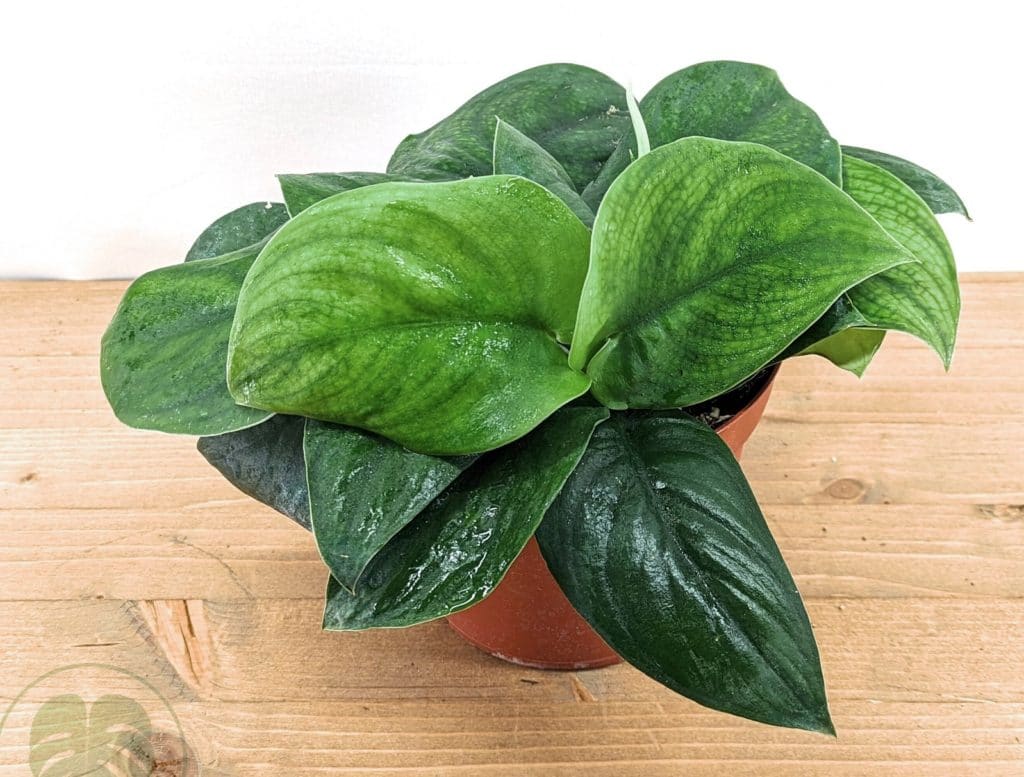The Jade Satin Scindapsus Plant is a beautiful and exotic-looking plant that is perfect for adding color and life to any room. Although it may seem like a complex plant to take care of, anyone can have a healthy Jade Satin Scindapsus Plant with the correct information.
These plants have large, emerald-colored leaves that are heart-shaped and have webbed veins. This blog post will cover everything you need to know about the Jade Satin Scindapsus Plant, from its origins to the best way to care for it.
What is a jade satin Scindapsus plant?
The jade satin Scindapsus is similar to pothos plants and is part of the Scindapsus genus. Both pothos and Scindapsus are part of the Araceae botanical family.
The jade satin Scindapsus is a climbing vine that originated in the jungles of South America. However, it can now be found growing all over Africa, Asia, Australia, and Central America. It can be grown indoors as a house plant or outside in the right climate. These plants look great in a hanging basket with the vines and leaves cascading over the edge.
How to care for a jade satin Scindapsus plant
Jade satin Scindapsus plants grow very well indoors and can be a great way to add some color to your office or living room. Here are some tips to help you correctly care for your tropical plant:
Sunlight requirements
To care for a jade satin Scindapsus plant, you should begin by finding a bright and well-lit location, but not in direct sunlight. These plants can grow well in partial shade but do best if they get enough sunshine. Be careful not to leave your plant in the full sun; it can cope with some morning sun but should be moved into the shade during the hottest part of the day. Too much direct sun will scorch your plant’s leaves and, in the long term, could even kill it.
Watering needs
Ensure you water your jade satin Scindapsus regularly, about once per week. When the plant is growing slower in the winter months, you should only water it once every two weeks. When watering your jade satin Scindapsus, be careful not to overwater your plant or leave it sitting in soggy soil, or it may suffer from root rot.
Jade satin Scindapsus plants are fairly drought tolerant but shouldn’t be neglected. You can let the soil dry out slightly between waterings and then give your plant a good soak.
Soil
When planting your jade satin Scindapsus in a pot, you will want to use well-draining soil. These plants prefer soil that’s aerated and contains some sand or perlite. You can use premixed soil that’s designed for tropical plants or succulents.
Fertilization
Fertilizer is an important part of growing a healthy jade satin Scindapsus plant. You should use a mild, water-soluble fertilizer at all times during the spring and summer months. During the fall and winter months, you only want to fertilize your jade satin Scindapsus once every six weeks.
Pruning
You can trim your jade satin Scingdapsus plant by pinching off any dead or dying leaves and pruning back any long vines growing towards the floor. Pruning will help keep your plant looking tidy and maintain its shape and size.
Pests
Jade satin Scindapsus plants can be susceptible to spider mites, aphids, and whiteflies. To prevent these pests from spreading, wipe the leaves of new plants with a wet cloth before bringing them into your home. If you see any signs of insect infestation, you can treat your plant with an insecticidal spray.
Temperature
Since jade satin Scindapsus are tropical plants, they will never survive in temperatures that fall below 40 degrees Fahrenheit. For this reason, you should only leave your plant outside year-round if you reside in USDA zones 9 to 11. The ideal temperature for a jade satin Scindapsus is between 60- and 80-degrees Fahrenheit.
Conclusion
The jade satin Scindapsus is a great plant that can be grown both indoors and outdoors. It adds color to any room but can also grow larger than expected if it has enough space to climb. If you are looking for something new to add life to your home, then the jade satin Scindapsus may be right for you.
Related:

